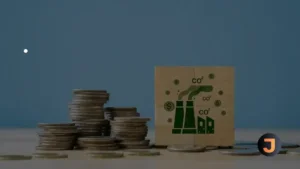Art as a Conduit for Environmental Awareness in Cyprus
In the picturesque landscapes of Cyprus, a movement harnessing the power of visual art to communicate environmental concerns is flourishing, drawing inspiration from the island’s own Stass Paraskos, a luminary in the contemporary art scene. The late artist, renowned for his innovative approach, pioneered the transformation of waste into compelling artworks, a practice that continues to resonate with artists and environmentalists alike.
Stass Paraskos’s most iconic creation, ‘The Great Wall of Lempa,’ stands as a testament to his vision. This monumental sculptural wall, now a treasured part of Cyprus’s heritage, is an assemblage of discarded objects ranging from broken tiles and ceramic toilets to scrap metal and advertising boards. Among these reclaimed materials, the silhouette of Paraskos himself—crafted from a Coca Cola sign—rides perpetually on a bicycle, symbolizing both his artistic journey and the cycle of reuse.
The influence of Paraskos’s ethos extends beyond his own works. A collective of artists in Pano Lefkara and Kato Drys, many of whom were his students or colleagues, have embraced his principles. They utilize recycled materials to create art that carries potent environmental messages. This group also serves as mentors to newcomers eager to immerse themselves in Cyprus’s rich culture and natural beauty, exemplifying an innovative approach to education that spans generations.
Phil Bird and Anna Georghiou’s murals in Pano Lefkara are striking examples of this legacy. Their works depict villagers living harmoniously with nature, a stark contrast to the destructive tendencies of modernity. Similarly, Aylin Myumyunova’s commissions draw from historical village life, painting scenes on repurposed wooden doors that echo a more sustainable past.
Peter Bird has taken this mission to heart with his intricate mini sculptures and textile patterns crafted from an array of repurposed items. His upcoming exhibition at the Mola Cultural Factory aims to inspire contemplation on the potential of waste materials in art and environmental messaging.
Martin Clark, director of Grampus Heritage & Training and an advocate for vocational training across Europe, underscores the importance of such initiatives. As artists like Peter Bird continue to weave environmental consciousness into their work, they honor the legacy of Stass Paraskos and ignite a dialogue on sustainability that transcends the boundaries of art.




